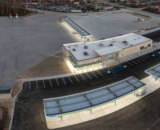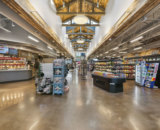Welcome to the newest post in our blog series, Darren’s Great Ideas! for Independent Operators.
Ten Ways to Get Customers to Come Inside From the Fuel Islands
When it comes to increasing customer counts, most operators have a good understanding of what it takes—clean operations, great curb appeal, competitive fuel prices, a destination offering, great customer service and a great customer experience and so on. While most of our over-the-road (OTR) customers have to come in to pick up their fuel ticket, that is changing as well, so focusing on ways to move customers inside is taking on more importance every day.
In the vast majority of our industry, customer counts and total transactions are driven by your gasoline purchasing customers. While the average ticket is much higher in general with the OTR professional driver, the volume of transactions favors the gasoline customer due to the foot traffic they create.
Unlike the OTR professional driver, the gasoline customer doesn’t have to come into your location. When they do, many are driven inside for restroom and food needs. Most of our customers estimate that fewer than 20 percent of all customers come inside. During profitable reviews performed at locations, I have found that number to be about 10 percent. To get the figure, I simply standing outside for an hour here and an hour there and manually tracking customers fueling then going into the store. It is not scientific, but it gives you a good idea.
Asking yourself how many of those 10 customers out of 100 just used the restroom and never purchased a single item is worthwhile. Instead of assuming how many customers really come in and buy something, spend the time and money to observe and track both over a few days to get some solid facts and averages.
To increase the likelihood that fueling customers will make the 100-foot trek into the main building from the gasoline islands, you need to be hitting on all cylinders when it comes to the fundamentals. Plus, try these additional 10 helpful hints to help increase the chances your gasoline customers will come in and buy.
- Create seasonal loss leader promotions that create need. A coffee and a pastry promotion during the morning winter drive to work or a fountain soda and a bag of popcorn during the summer afternoon drive home can spur sales and foot traffic.
- If you are the price leader in any price-sensitive categories, such as beer and cigarettes, ensure your message is clear and customers at the gasoline pump know you are. If you have a location that has a significant percentage of overall gasoline gallons driven by local patrons, messaging price-sensitive categories properly is even more critical.
- Ensure that messaging is consistent from the bill boards to the high rise, street sign, pump toppers and the building messaging. Drive home your message with frequent touch points.
- Ensure your female customers know you offer light fare food products, fast nutritional meals to go and other time saving services and offerings. Your female customer is traditionally busier than your male customer during the day, managing both the family responsibilities and her own professional responsibilities. Knowing you are there to service her needs makes a difference where she spends her money.
- Food promotions that are tied to fueling, such as purchase ten cups of coffee get 8 cents off a gallon of gas or purchase ten 20-oz. fountain drinks and get 8 cents off a gallon of gas.
- Learn who is really visiting your operation. Learn the difference between a buyer and a shopper and understand when customers are doing their buying and when they are doing their shopping. Are mornings and afternoons for buying and evenings for shopping? When is your biggest retail day?
- Develop promotional days that connect with your customer. Students and locals may appreciate Wacky Wednesdays where you give away a free lottery ticket or quick pick with a fuel purchase. But, the customer has to come in. You’ll want to be sure to check local and state regulations regarding such practices.
- During cold months and or raining days deploy helpers at the gasoline islands on your two busiest fueling days of the week. Give them directives to offer help and suggestive sell, essentially bringing the store to the customer. For example, ask, “Can I get you a cup of coffee while you are fueling? Our premium roast is on sale…two creams and a sugar?”
- Display items in professional bulk stack display with the appropriate collateral in front of your store during key drive times. A case of soda on Friday evenings, Saturday and Sunday Mornings, or fresh flowers on Monday’s or Friday evenings, for example.
- Look into the trend popping up in major cities like Washington, D.C. where gas stations are combining fuel and gourmet fast food programs, such as Indian, Korean, authentic Mexican, Chinese and Italian. Additionally consider food trucks and or outside food stands. While they are not exactly inside the store, it does get them to your store front where it gives you a chance to display the feature and benefits of your operation.
/// Read more Darren's Great Ideas for Independent Operators posts here.
|
Join the conversation! How do you get customers to come in from the fuel island? |
Subscribe to Updates
NATSO provides a breadth of information created to strengthen travel plazas’ ability to meet the needs of the travelling public in an age of disruption. This includes knowledge filled blog posts, articles and publications. If you would like to receive a digest of blog post and articles directly in your inbox, please provide your name, email and the frequency of the updates you want to receive the email digest.


